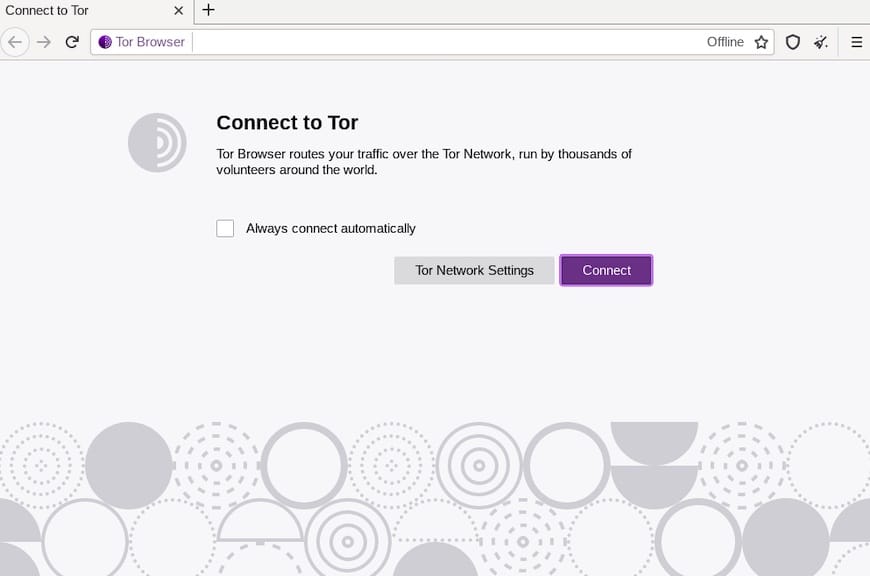How To Install Tor Browser on CentOS Stream 10

In today’s digital landscape, protecting your online privacy has become increasingly crucial. Tor Browser stands as a powerful tool in safeguarding your anonymity while browsing the internet. For CentOS Stream 10 users, installing and configuring Tor Browser properly ensures you can benefit from its privacy features while maintaining system security. This comprehensive guide walks you through every aspect of installing Tor Browser on CentOS Stream 10, from understanding its functionality to advanced configuration options.
Whether you’re a security researcher, privacy advocate, journalist working with sensitive information, or simply a user concerned about digital footprints, this step-by-step tutorial provides everything you need to get Tor Browser running smoothly on your CentOS Stream 10 system. Let’s begin with understanding what makes Tor Browser unique before diving into installation methods.
Understanding Tor Browser
Tor Browser is much more than just another web browser. It’s a modified version of Firefox specifically designed to provide anonymity and privacy while browsing the internet. Unlike conventional browsers that establish direct connections between your computer and websites, Tor Browser routes your traffic through a distributed network of relays operated by volunteers worldwide.
This network architecture creates multiple layers of encryption—hence the name “The Onion Router” (Tor)—making it extremely difficult for anyone to track your online activities or identify your physical location. Your connection bounces through at least three different relays before reaching its destination, with each relay only knowing its immediate connections in the chain.
Key benefits of using Tor Browser include:
- Enhanced privacy and anonymity online
- Access to .onion sites (Tor hidden services) not available on regular browsers
- Ability to circumvent censorship in regions with restricted internet access
- Protection against surveillance and traffic analysis
- Reduced digital fingerprinting and tracking
However, Tor Browser also comes with certain limitations. Browsing speeds are typically slower due to the multiple relay routing. Additionally, some websites may block Tor exit nodes, and the browser doesn’t automatically encrypt all internet traffic—only what passes through the browser itself. For comprehensive privacy, consider combining Tor with other security tools.
Proper installation matters significantly for security. Using unofficial sources or outdated versions might compromise the very privacy you’re trying to protect. Let’s now prepare your CentOS Stream 10 system for a secure Tor Browser installation.
Prerequisites for Installation
Before installing Tor Browser on CentOS Stream 10, ensure your system meets the necessary requirements and is properly prepared. This preparation helps prevent issues during installation and ensures optimal performance.
System Requirements
- CentOS Stream 10 (64-bit) with current updates applied
- At least 2GB RAM (4GB recommended for smoother performance)
- Minimum 500MB of free disk space
- Active internet connection
- Basic familiarity with terminal commands
Required Privileges
You’ll need root or sudo privileges to install packages and modify system files. Verify your access level before proceeding. If you don’t have these privileges, contact your system administrator.
To check if you have sudo access, run:
sudo -vIf you receive no error message, you have the necessary permissions to proceed.
Updating Your System
Always start with an updated system. Open a terminal and execute:
sudo dnf update -yThis command ensures all packages are current before beginning the installation process. Reboot if kernel updates were applied:
sudo rebootInstalling Dependencies
Tor Browser requires several dependencies to function properly. Install them using:
sudo dnf install -y libevent libX11 libXrender libXext libXt gtk3 mesa-libGL dbus-glib perl gnupg2 wgetThese packages provide necessary system libraries and utilities that Tor Browser needs to run correctly on CentOS Stream 10.
With preparations complete, let’s explore the two main methods for installing Tor Browser on your system.
Installing Tor Browser Using EPEL Repository
The Extra Packages for Enterprise Linux (EPEL) repository provides high-quality additional packages for CentOS. Using this repository is often the easiest way to install Tor Browser, as it handles dependencies automatically and integrates well with your system’s package management.
Enabling the EPEL Repository
First, install the EPEL repository if you haven’t already:
sudo dnf install -y epel-releaseAfter installation, update your repository information:
sudo dnf update -yInstalling Tor
With EPEL enabled, install the core Tor service:
sudo dnf install -y torThis installs the Tor network protocol handler, but not the full browser yet. The Tor service will be installed as a system service managed by systemd.
Starting and Enabling Tor Service
Start the Tor service and enable it to run at boot:
sudo systemctl start tor
sudo systemctl enable torVerify that Tor is running correctly:
sudo systemctl status torYou should see “active (running)” in the output.
Installing Tor Browser
Next, install the Tor Browser package:
sudo dnf install -y torbrowser-launcherThis package provides a launcher that will download and install the official Tor Browser bundle from the Tor Project website.
Running Tor Browser Launcher
You can now launch the Tor Browser setup as a regular user (not as root):
torbrowser-launcherThe launcher will download the latest version of Tor Browser, verify its signature, and install it in your user directory (~/.local/share/torbrowser).

Advantages and Disadvantages of Repository Installation
Using the repository method offers several benefits:
- Simpler installation process with automatic dependency resolution
- Integration with system package management
- Easier updates through the standard system update process
- Lower chance of installation errors for beginners
However, there are some drawbacks:
- Repository versions might lag behind the official releases
- Less control over the installation location and process
- Potential policy differences between repository maintainers and Tor Project
If you encounter dependency issues, particularly with libevent, resolve them with:
sudo dnf install -y libevent-develFor users preferring more control or the latest version, the manual installation method might be more appropriate.
Configuring Tor Browser on CentOS Stream 10
After successfully installing Tor Browser, proper configuration is essential to maximize privacy and security while ensuring the browser functions correctly on your CentOS Stream 10 system.
Initial Setup Wizard
When you first launch Tor Browser, a setup wizard appears. Follow these steps:
- Select your language preference from the dropdown menu
- Choose your connection method (more on this below)
- Click “Connect” to proceed
Network Configuration Options
Tor Browser offers two main connection methods:
Direct Connection
If your internet connection is unrestricted and Tor isn’t blocked in your region, select “Connect directly to the Tor Network.” This is the simplest option and works for most users.
Using Bridges
If your internet service provider (ISP) or country blocks Tor, select “Tor is blocked or censored in my location.” You’ll then have three bridge options:
- Use a built-in bridge: Select this option and choose a bridge type (obfs4, snowflake, or meek-azure)
- Request a new bridge: Get a custom bridge by solving a CAPTCHA
- Provide a bridge I know: Enter bridge information you’ve obtained elsewhere
Security Level Configuration
After connecting, configure your security level by clicking on the shield icon in the browser toolbar:
- Standard: Default level, all browser features enabled
- Safer: Disables some website features that can be security risks
- Safest: Only basic website features are enabled, some sites may break
Choose based on your security needs. For maximum privacy, “Safest” is recommended, but you may need to drop to “Safer” for websites that require more functionality.
Browser Preferences and Privacy Settings
Fine-tune your browser settings for enhanced privacy:
- Click the menu button (≡) in the top-right corner
- Select “Settings” or “Preferences”
- Navigate to the “Privacy & Security” tab
- Ensure “HTTPS-Only Mode” is enabled in all windows
- Review cookie settings and history retention policies
Tor Circuit Visualization
To see your current Tor circuit:
- Click on the (i) icon in the address bar or the small shield icon
- Select “Tor Circuit” to view the relays your connection is using
- Click “New Circuit for this Site” to change your path if needed
This visualization helps you understand how your connection is being routed and provides an option to create a new circuit if you suspect the current one might be compromised.
Running Tor Browser as a Non-Root User
Operating Tor Browser with root privileges poses significant security risks. Always run Tor Browser as a standard user to minimize potential system compromise if the browser is exploited.
Security Implications
Running applications with root privileges can lead to severe consequences if those applications contain vulnerabilities. An attacker exploiting a browser flaw could gain complete control over your system when the browser runs as root. By using a standard user account, you limit potential damage to that user’s permissions.
Troubleshooting Common Installation Issues
Even with careful installation, you might encounter certain issues when setting up Tor Browser on CentOS Stream 10. Here are solutions to common problems:
Repository Connectivity Problems
If you can’t connect to the EPEL repository:
sudo dnf clean all
sudo dnf updateIf problems persist, try using an alternative mirror:
sudo nano /etc/yum.repos.d/epel.repoUncomment the “baseurl” line and comment out the “metalink” line, then save and retry.
Dependency Errors
For missing dependencies, identify and install them manually:
sudo dnf install -y libevent libXt gtk3 libXcomposite libXcursor libXdamage libXfixesFor persistent issues with specific libraries:
sudo dnf provides */[library-name]Replace [library-name] with the missing library to find which package provides it.
Permission Issues
If you encounter “permission denied” errors:
sudo chown -R $(whoami):$(whoami) ~/.local/share/torbrowser
sudo chmod -R 755 ~/.local/share/torbrowserFor system-wide installations:
sudo chmod -R 755 /opt/tor-browser
sudo chmod 777 /opt/tor-browser/Browser/TorBrowser/Data/Browser/profile.defaultExtraction Problems
If you can’t extract the downloaded archive:
sudo dnf install -y tar xz tar -xf tor-browser-linux64-*.tar.xz --no-same-ownerNetwork Configuration Issues
If Tor can’t connect to the network:
- Check your firewall settings:
sudo firewall-cmd --list-all - Allow Tor through the firewall:
sudo firewall-cmd --permanent --add-service=tor - Reload firewall:
sudo firewall-cmd --reload
If your network blocks Tor, try configuring bridges as described in the configuration section.
Signature Verification Failures
If GPG signature verification fails:
gpg --keyserver keyserver.ubuntu.com --recv-keys 0xEF6E286DDA85EA2A4BA7DE684E2C6E8793298290Then retry the verification process. If it still fails, the download might be corrupted or tampered with—download again from the official website.
Maintaining and Updating Tor Browser
Regular maintenance ensures Tor Browser remains secure and functional on your CentOS Stream 10 system.
Tor Browser’s Update Mechanism
Tor Browser includes an automatic update checker that notifies you when updates are available. When prompted:
- Click “Update” when the notification appears
- Allow the browser to download and apply the update
- Restart the browser when prompted
The update process preserves your settings and bookmarks while replacing the core browser files.
Manual Update Procedures
For users who prefer manual updates:
- Download the latest version from torproject.org
- Extract the archive to a temporary location
- Close any running Tor Browser instances
- Backup your profile:
cp -r /opt/tor-browser/Browser/TorBrowser/Data ~/tor-backup - Replace the old installation:
sudo rm -rf /opt/tor-browser && sudo mv tor-browser /opt/ - Restore permissions:
sudo chown -R root:root /opt/tor-browser && sudo chmod -R 755 /opt/tor-browser
Verifying Updates
Always verify the authenticity of manual updates:
gpg --verify tor-browser-linux64-*.tar.xz.asc tor-browser-linux64-*.tar.xzOnly proceed if you see “Good signature” in the output.
Update Frequency Recommendations
Security best practices suggest:
- Update immediately when security updates are released
- Check for updates at least weekly
- Set a calendar reminder if automatic updates are disabled
- Subscribe to the Tor Project’s security announcement mailing list
Handling Failed Updates
If an update fails:
- Check your internet connection
- Ensure sufficient disk space
- Try restarting the browser and updating again
- If problems persist, download and install the latest version manually
- Restore your profile data from
~/tor-backupif needed
Congratulations! You have successfully installed Tor browser. Thanks for using this tutorial to install the Tor Browser (anonymous browsing) on CentOS Stream 10. For additional help or useful information, we recommend you check the official Tor website.